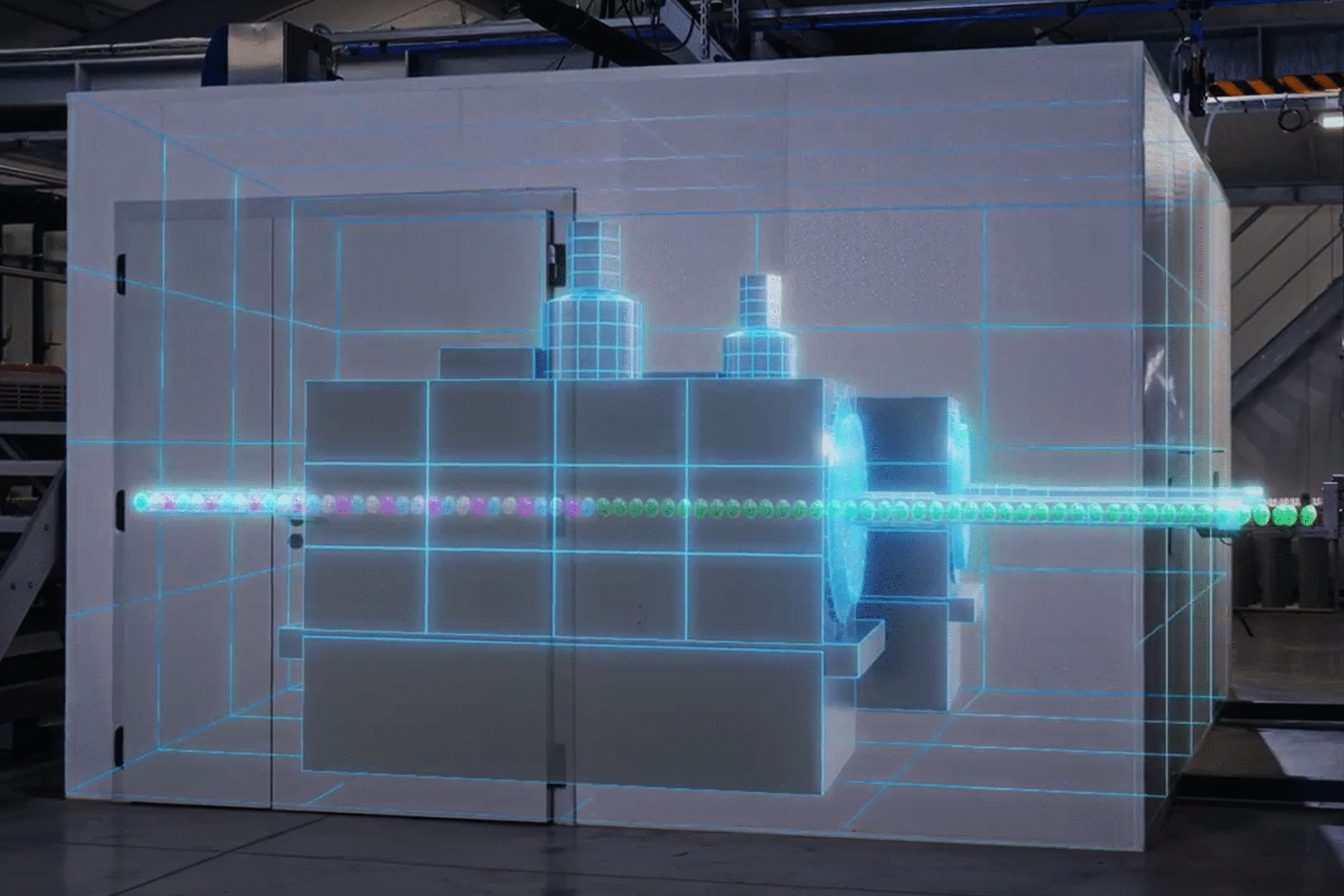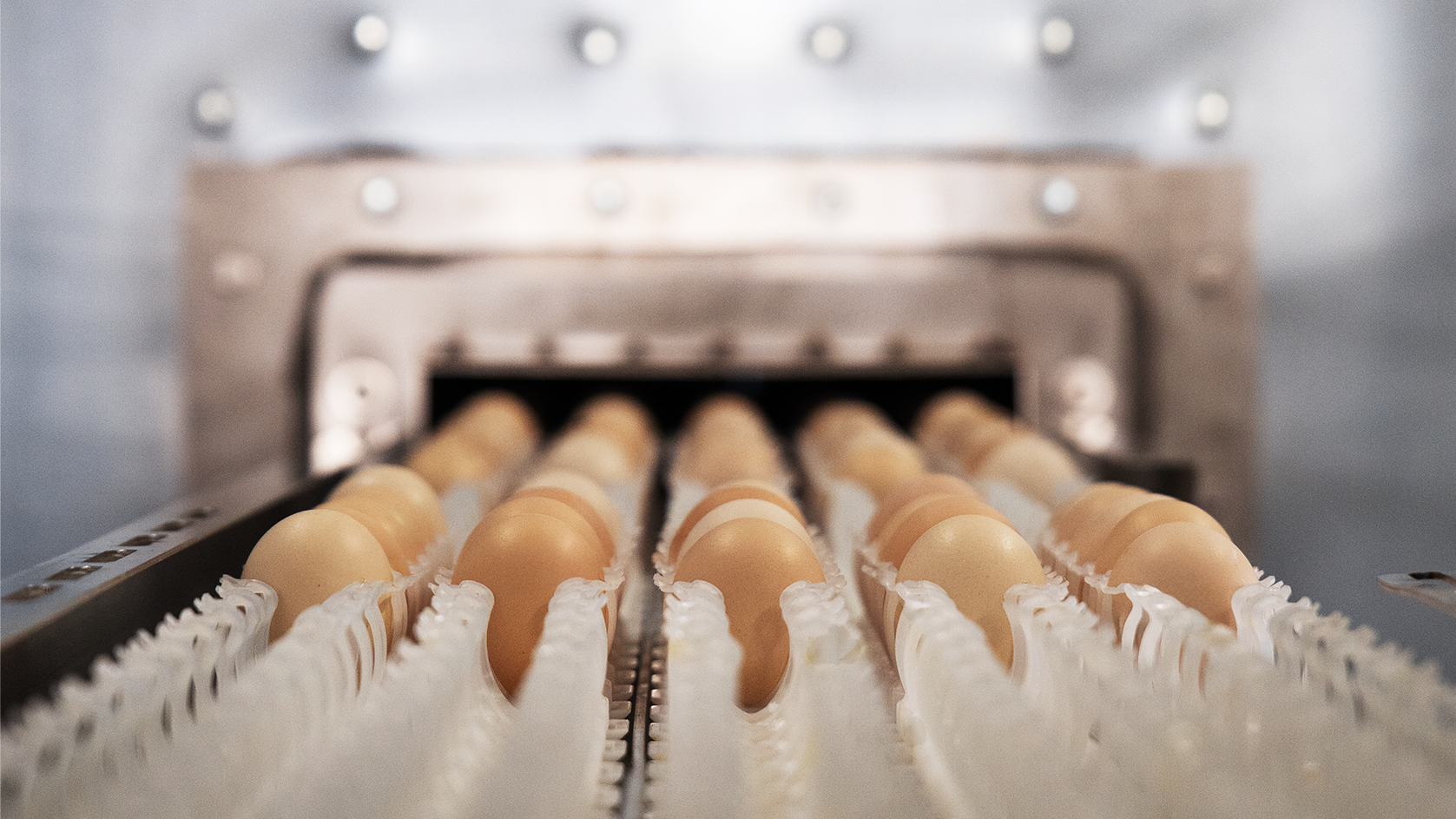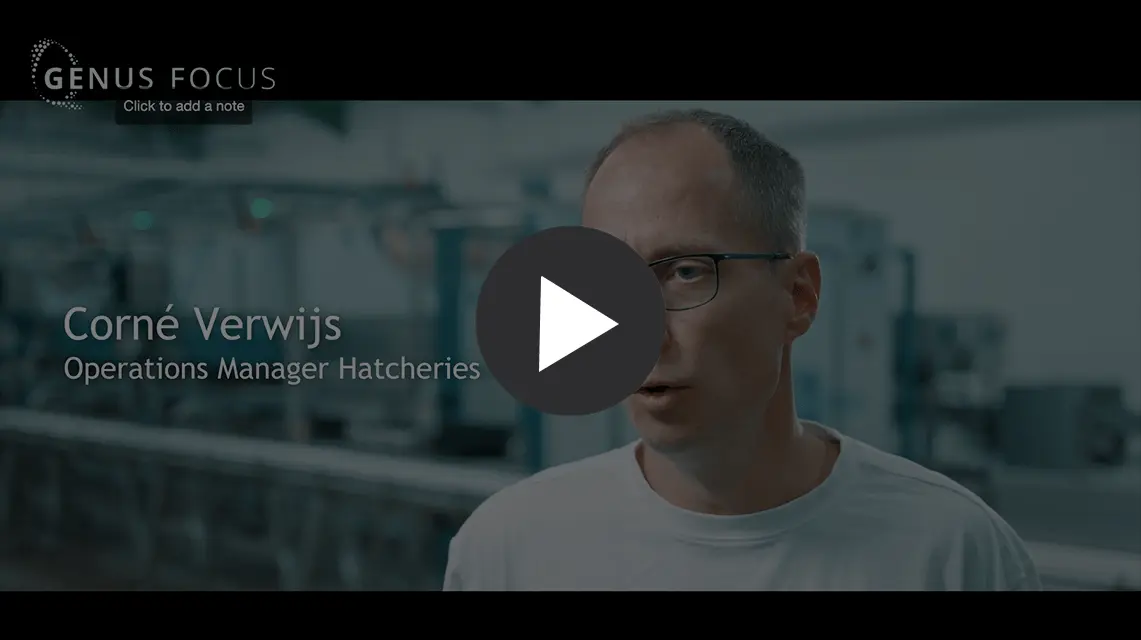From Hospital to Hatchery: How We Automated MRI
A look at the robotic egg chain, intelligent data tracking, and AI-driven sorting in the hatchery.
July 22, 2025
Magnetic Resonance Imaging (MRI) is a household name in healthcare, with an estimated 100-150 million Magnetic Resonance Imaging (MRI) scans performed globally each year to diagnose everything from brain tumors to torn ligaments. Its power is undisputed, but its process has always been slow, complex, and expensive. At Orbem, we saw an opportunity to change that. We are on a mission to industrialize MRI, transforming it into a tool that is fast, automated, and accessible to everyone, starting with the food industry.
To achieve this, we had to completely rethink how MRI works.
The Challenge: A Race Against the Clock
Taking poultry as an example, let’s look at how we adapt MRI for the purpose of sexing unhatched chicken eggs. The global poultry industry incubates approximately 100 billion eggs each year. If we used traditional medical MRI methods to look inside them, it would take us roughly 3.8 million years. A typical hospital MRI scan requires a patient to be manually positioned on a table, moved into the scanner, and then wait anywhere from 15 to 90 minutes for the scan to complete. Every step demands human interaction.
In our early days, we followed this manual process, scanning about one egg per minute. Today, our automated Genus Focus system scans an egg in less than one second. How did we achieve this leap in performance?
The Solution: A Symphony of Automation
In close partnership with automation expert the Vencomatic Group, we built a fully automated system that eliminates the need for human interaction and seamlessly integrates in the hatchery process. This process has four key elements:
1. Automated Egg Handling
The process begins with a robotic pick-and-place system that gently lifts eggs from setter trays using silicone suction cups. Once a tray is empty, the system automatically proceeds it to the empty tray stacker and moves to the next, ensuring a continuous supply.
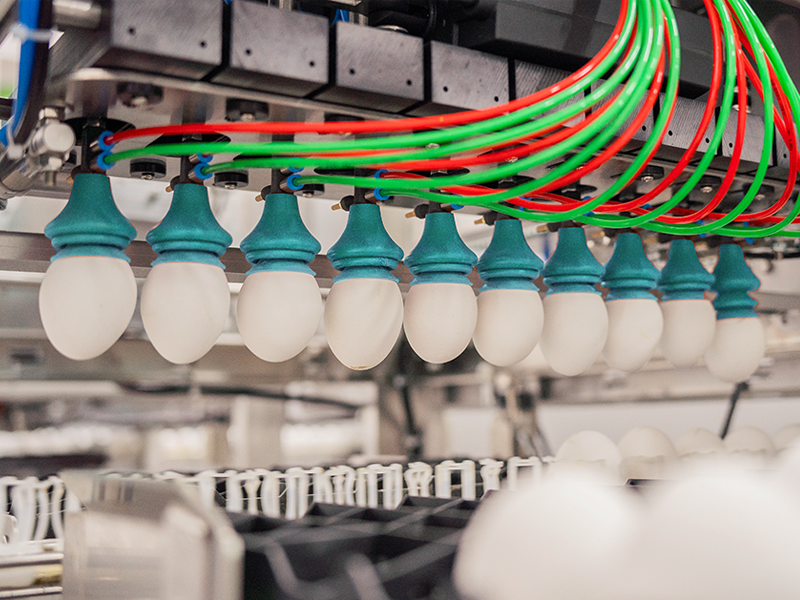
Eggs are lifted from setter tray using silicone suction cups.
2. The Egg Chain
Instead of a slow patient table, we designed an “egg chain” that holds eggs in single file. This chain moves continuously through the center of the MRI scanner, with each egg advancing to the scanning position in just a fraction of a second. The scanner is almost always in operation, maximizing throughput.
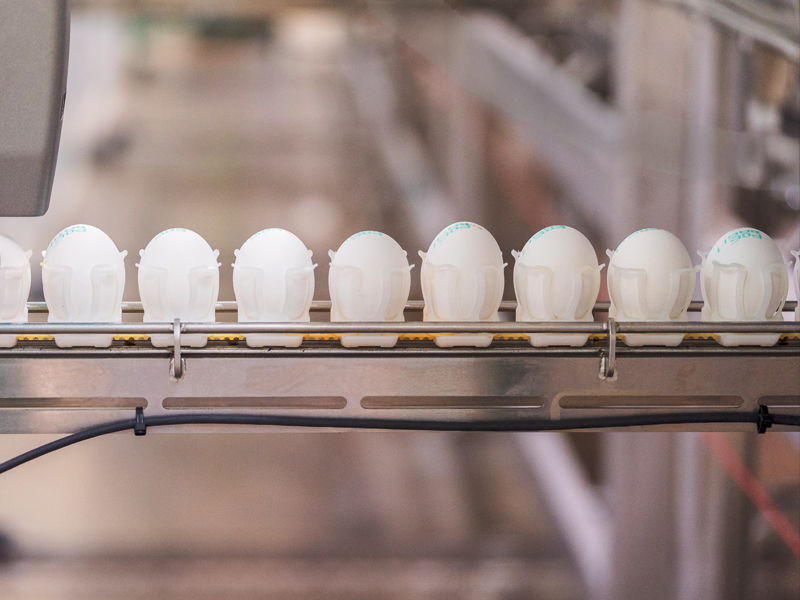
The egg chain holds eggs in single file as they get moved along.
3. Intelligent Scan Automation
The entire scanning process is a seamless digital conversation. The egg chain controller signals the MRI scanner to begin a scan the moment an egg is in position. Once finished, the scanner signals the chain to advance to the next egg. Simultaneously, the image data from the previous egg is sent to a server for AI classification, ensuring no time is lost.
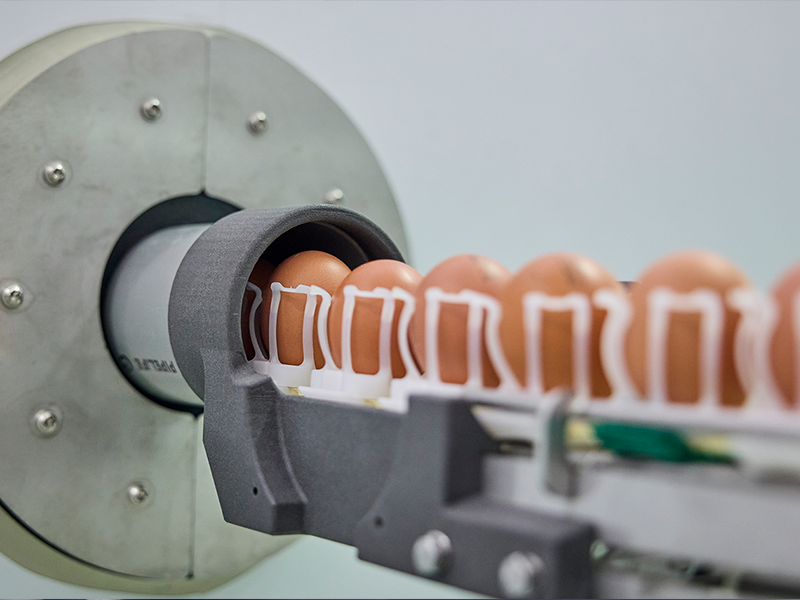
The MRI scanner signals the chain to advance to the next egg.
4. Precision sorting
On the outbound side, another robotic system sorts the eggs based on the AI’s classification results—accurately separating them into male, female, or unfertilized categories.
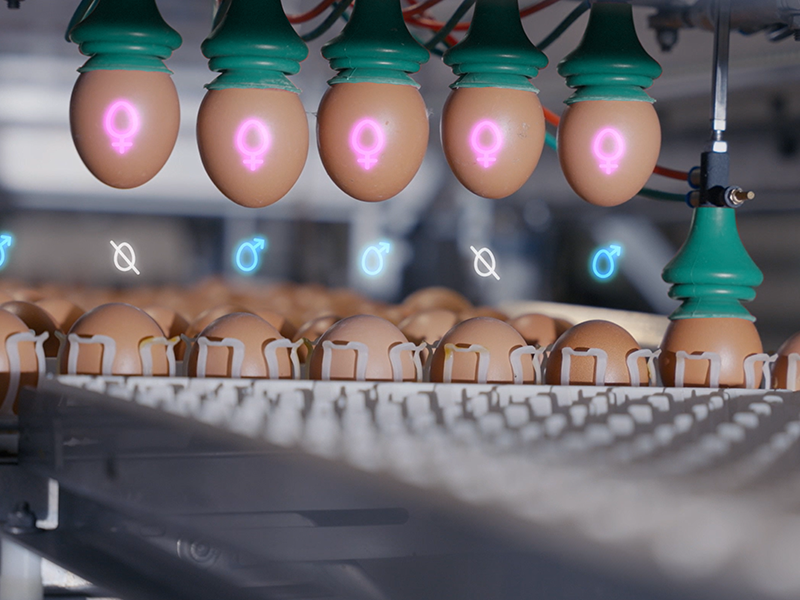
Precision sorting into male, females, and unfertilized.
Overcoming the Challenges of Industrial MRI
Automating MRI on this scale required solving complex challenges:
Flawless data tracking
Our system manages multiple asynchronous processes—like egg movement, scanning, and AI classification—and must perfectly match every classification result to the correct physical egg on the chain. Mistakes here are not an option.
MRI-Safe Design
The powerful magnetic fields in an MRI scanner required us to construct the entire egg chain from non-metallic materials, like specialized plastics and rubber, to ensure safety and prevent image interference. For the same reason, our magnet room is locked at all times, to anyone except for MRI engineers. Because we have developed a reliable industrial version of MRI, our magnet rooms never need access outside of the yearly preventative maintenance by a trained MRI engineer.
The Challenge of Speed vs. Quality
Finally, our system must meet the immense throughput demands of modern hatcheries, where thousands of eggs require analysis daily. In imaging, there is a fundamental trade-off: accelerating an MRI scan typically reduces image quality. However, in our process, we cannot compromise on accuracy. This is where our deep expertise shines. Our team of MRI and AI scientists implements state-of-the-art acquisition and reconstruction techniques that overcome this challenge, ensuring maximum throughput without any expense to accuracy.
We are constantly investigating new methods to push our processing speeds even further, redefining what is possible in industrial imaging.
The Future of Food, Powered by MRI
By mastering the automation of MRI, Orbem is doing more than just looking inside eggs. We are building a platform with the potential to significantly reduce waste and improve quality across the entire food industry. Viewing MRI not just as a healthcare tool but as a powerful industrial solution allows us to process food at a scale that was previously impossible, paving the way for a more efficient and sustainable global food system.
Other interesting articles
The Story of Orbem's Revolutionary Fertilization Status Detector
How a small idea blossomed into a groundbreaking AI technology with the potential to save 10 billion eggs each year.
This Is the Impact of In-Ovo-Sexing with the Genus Focus
100 million eggs have been scanned with the contactless AI-powered technology.
How the Genus Focus adds Value to Hatcheries with Full Automation
Discover Pluriton’s efficiency improvements after our installation.
Discover other milestones
Want to write about us?
We would love to hear from you!

Barbara Jilek
PR and Content Marketing Manager

